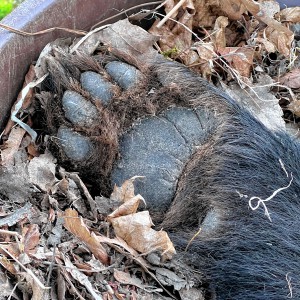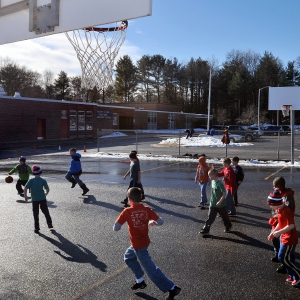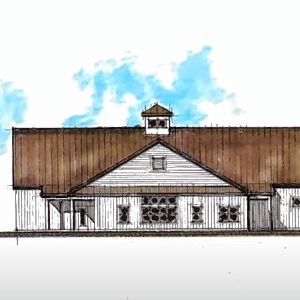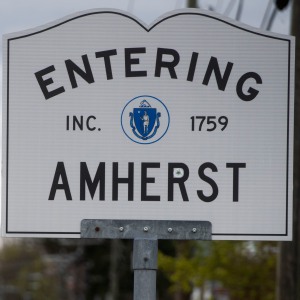Holyoke fish lift sees large numbers of shad passing over dam this season
| Published: 07-12-2017 10:24 AM |
HOLYOKE — As the American shad migration upstream comes to a close, the numbers of fish passing over the Holyoke dam this year has been encouraging to fish biologist and those from who operate the Robert E. Barrett Fishway.
On July 2, the total number of fish to be successfully lifted over the dam was 536,525 — a 150,595 rise from last year’s final total. This number has only been surpassed once, when a record 732,336 shad successfully passed the dam during the 1992 migration season.
The shad migration from the open ocean up the Connecticut River typically lasts from about late April to the end of June.
“We begin operation in April and continue until mid-November for passage of a variety of species,” said Kate Sullivan, Holyoke Gas and Electric marketing coordinator.
Rainy weather this spring caused several high flow events that created adverse hydraulic conditions in the fishway making the dam impassible for the shad and causing them to temporarily suspend their migration.
“It started slow this year, then one day in May it went from about 1,000 to 75,000,” said biologist Kenneth Sprankle of the U.S. Fish and Wildlife Service. “That is because the fish were backed up, waiting to figure out how to get by this area.”
That was the highest one-day total to ever pass the over the dam, and it kept the Holyoke Community College interns counting shad at observation windows hard at work, trying to keep up with the large number of fish.
“It was a wild day,” Sullivan said. “The windows were completely full of fish. It was just unbelievable.”
Article continues after...
Yesterday's Most Read Articles
 Holyoke man finds bear paw in his yard
Holyoke man finds bear paw in his yard
 Boyfriend accused in slaying of Hampden sheriff’s assistant, former legislator’s top aide
Boyfriend accused in slaying of Hampden sheriff’s assistant, former legislator’s top aide
 Three finalists named for Ryan Road School principal in Northampton
Three finalists named for Ryan Road School principal in Northampton
 Developer pitches new commercial building on Route 9 in Hadley
Developer pitches new commercial building on Route 9 in Hadley
 Two men dump milk, orange juice over themselves at Amherst convenience store
Two men dump milk, orange juice over themselves at Amherst convenience store
 Sadiq to leave Amherst middle school principal role
Sadiq to leave Amherst middle school principal role
According to the Atlantic State Marine Fisheries Commission, the Connecticut River American Shad population is considered stable, but at reduced levels of abundance.
An objective of 1.7 million shad entering the mouth of the river has been set by the Connecticut River Atlantic Salmon Commission’s in their 2017 Management Plan for Connecticut River American Shad.
“I think the numbers at Holyoke this year are really good,” said ecologist Ted Castro-Santos, of the Silvio O. Conte Anadromous Fish Research Laboratory in Turners Falls, last week.
Castro-Santos also added that a variety factors can effect these totals from year to year. Natural migration numbers can fluctuate to a certain extent, and for a variety of reasons, many of which remain unknown.
“Seeing this number is great, but it also makes us ask the question: ‘if this is the number that we are passing over the dam, how many are we actually missing?’”
In 2011 Castro-Santos and Sprankle did a two-year study looking at how American shad migrate and move through a river system with multiple dams.
“We found that 80 percent of the shad that enter the river reach Holyoke and of that number, 70 percent pass the dam. So that is 56 percent, or a little over half of the number of fish that enter the river that make it past the Holyoke dam.”
According to Castro-Santos, “if we get 1.7 million to the river, with the fishways at the dam as we see them now, we would only expect to pass about 650,000.
Once numbering in the millions, shad numbers in the Connecticut dropped in 1895 after construction of the Holyoke dam, which created a barrier to migration and spawning.
The Robert E. Barret Fishway went into operation in 1955, though it only passed an average of 30,370 shad a year over a 21-year period until 1976.
“In 1976 a second fish lift was added and some improvements were made,” Sprankle said. “Pre-1976, it was a very different situation than we have now.”
The size of the annual shad run has increased concurrent with the installation of the fishway, and updates and improvements to the facility may help to boost the abundance of shad in the Connecticut River.
In 2004 the renovation and expansion of the existing fishway at the Holyoke dam was done in the hopes of increasing fish passage effectiveness.
In 2015, several upgrades were added to the fishway, including a flow deflector to it easier for fish to find their way in to the lift entrance, and the reduction of the width of the spillway fish lift entrance to increase water velocity making it easier for them to find their way upstream.
Other improvements were made to protect and assist fish traveling downstream. This included a 130-foot fish exclusion rack that spans the entire length of the turbine intakes, and downstream bypasses that can pass fish downstream from any depth.
Helping shad make the return trip to the ocean will hopefully increase the number of “repeat spawners,” which in turn would help increase the number of juveniles.
According to Sprankle, first-time spawners may produce 3,000 to 4,000 eggs, released in batches along the migration route. Females that are eight to nine years old, however, can produce over a million eggs.
Castros-Santos said that the current number of repeat spawners is hovering around 5 percent.
“This is a major drop from historic numbers,” he said. “If we had 35 percent repeaters today, we would probably be at our target number to the river.”
“We see these fish as a very ecologically important species to the river,” Sprankle said.
At every stage of their development, shad provide food for a variety of fish, birds and mammals living in and around the river. Some of these species include osprey, herons, bald eagles, river herring and bass, river otters and black bears.
“Spawning produces a tremendous number of juveniles in our river system, and that provides food for anything that likes to eat little fish,” Sprankle said.
The Holyoke dam is 86 miles from the mouth of the river at Long Island Sound and is the first major dam the migrating fish encounter. On their 140-mile long journey up stream, they must also navigate a dam in Turners Falls and the Vernon Dam in Vermont.

 Intermittent rail trail closures expected in Amherst, Belchertown
Intermittent rail trail closures expected in Amherst, Belchertown Fearful Belchertown residents blame stray bullets on nearby gun club, appeal to town for help
Fearful Belchertown residents blame stray bullets on nearby gun club, appeal to town for help State: South Hadley’s fiber-optic revenues not public records
State: South Hadley’s fiber-optic revenues not public records  New federal mandate requires informed consent for sensitive exams
New federal mandate requires informed consent for sensitive exams
